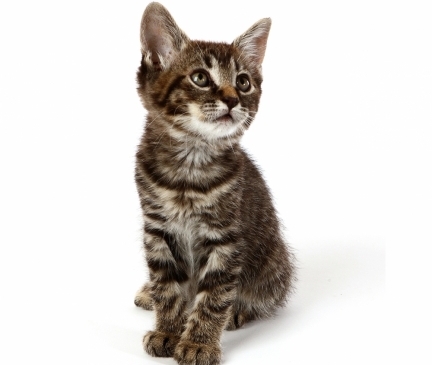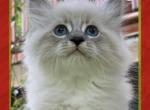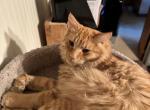

Manx Cat Breed Description
Manx Traits At A Glance
Active
Playful
Requires Attention
Affectionate
Vocal
Docile
Intelligent
Independent
Health
Grooming
Child Friendly
Pet Friendly
Size: The Manx cat breed is a medium-sized, stocky cat that typically weighs between 8 to 12 pounds.
Characteristics: The Manx cat is primarily known for being a tailless cat. But, they can actually have an assortment of tail lengths. Depending on the length of the tail, it may be referred to as rumpy, rumpy-riser, stumpy, and longy. The preferred style of tail is "rumpy," which means no tail. This unique cat also has long hind legs which gives them an interesting gait that many refer to as "rabbit-like" and has even been called the "Manx hop." The medium sized Manx has a round body, with a round head and big, round eyes. They have short, thick necks and wide-based ears that are slightly rounded.
Temperament: Manx cats are even-tempered, wonderful cats. They are adaptable and sweet and can thrive in many different types of households. Manx cats are naturally mousers and enjoy activity and games. Because of their long, strong hind legs, they are powerful and agile jumpers, capable of reaching great heights. They are funny and love to be silly and playful with their companions. Additionally, they are quite intelligent. They enjoy challenging games and can even learn to walk on a leash. And don't be surprised if they are fascinated by water and want to play in it. When they are done playing, they will happily relax and rest. Content to cuddle up on their favorite companion's lap.
Care: Caring for the Manx is relatively easy. Aside from offering lots of snuggles and gentle petting, be sure to brush your cat's coat weekly. Bathe your Manx as needed but it should not need bathing often. Additionally, brush your cat's teeth to prevent periodontal disease and clean ears and trim nails to keep your Manx looking show quality.
Coat: Manx cats can be both longhair and shorthair cats, but both have double coats. The shorthair coat is thick, glossy and padded and the longhair coat is plush, silky and beautiful. Their coat can come in a variety of colors and patterns.
Origin: The story of the Manx cat breed goes back quite far. There are legends and folklore that surround the origins of the Manx including them descending from ship cats that had been shipwrecked on the Isle of Man. These fascinating cats are said to have swam to shore to seek refuge on the Isle. The Isle of Man is located between England and Ireland, in the Irish Sea. Some say that they arrived with Viking settlers or explorers visiting the Isle. But ultimately, the true tale of how the Manx cat came to be is a bit blurry.
One thing that makes the cat incredibly fascinating is that it is tailless. While there are certainly many stories about how the Manx wound up a tailless cat, a natural genetic mutation resulted in the Manx's lack of tail. Because the cats were confined to the Isle, they're mating pool was rather shallow and thus, the dominant gene that produced tailless cats persisted and spread rapidly. The modern Manx does not have quite such a storied past. It has been a popular breed among cat fanciers for some time and was even said to be favored by King Edward VIII. Manx cats have been an essential part of cat shows for some time and have been in the United States since the late 1800s. They are accepted by all major associations and have been a well respected cat breed for many years.


